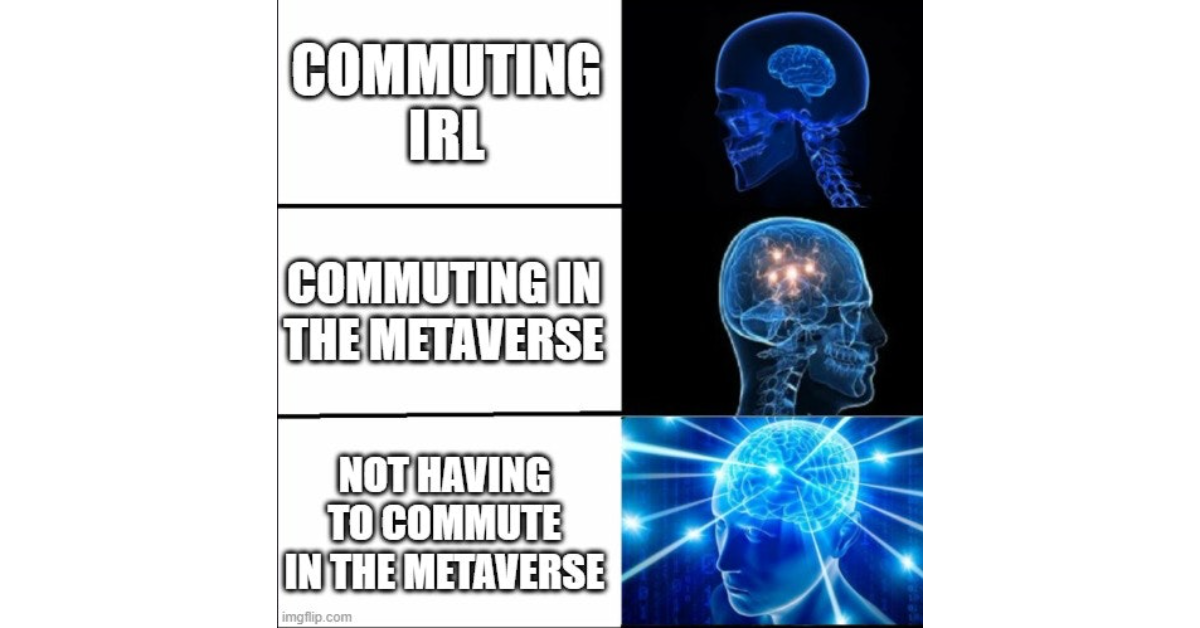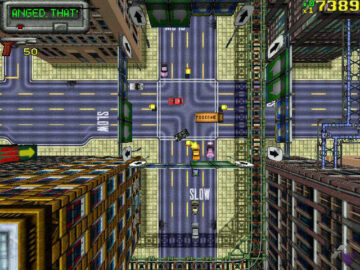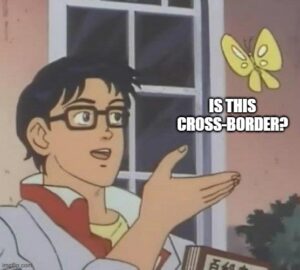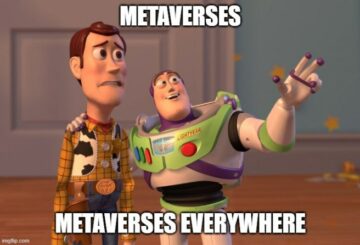
If I am in a workspace in a virtual world and I want to get to another experience, why would I stand on a virtual train smelling a virtual armpit?*
Bricks
In the real world, there are unavoidable frictions as we go about our day to day life. When I commute, I walk, take a subway, and walk again. When I go to the shopping mall, I have to navigate from one store to another. This is a waste of time and energy.
So why do metaverses insist on making us “walk” from one place to another? Why do they add this friction in? Do we need this level of tedious realism to achieve immersion? And how should we think about a set of virtual immersive experiences without real-world constraints?
Clicks
On the internet I simply click a bookmark or type in the URL of the next store’s name, and boom, I’m in the next store. This is clearly more efficient.
We don’t need to walk in the Metaverse, we can teleport! We should be able to get to wherever we want to go to in one click.
*Click* – I’m watching a sports match with my buddies virtually sitting next to me. *Click* – I’m in a business meeting with a shared whiteboard. *Click* – I’m raiding a dungeon with my party. *Click* – I’m watching a movie in a private apartment with my partner.
Games have figured this out – they mostly don’t force you to walk long distances, without either allowing teleportation or adding in little value-adding tasks on the way that makes you feel like you’re achieving something (eg grinding for experience).
Clicks > Bricks
So, what’s the point in forcing people to walk around a virtual world? Why not just have a series of virtual experiences that can be navigated as we navigate the web today? We are not forced to “grind” between websites, we just hop from one to another. In Roblox you tap to enter or exit an experience, you don’t have to walk across a map.
Immersive experiences should be like websites not like shopping malls.
But this line of thinking goes against the very premise of Ready Player One and some of the virtual worlds where things exist in certain places that you have to travel to.
And this thinking challenges the concept of land value. Why should virtual land near a popular spot (a town square, a road, or a celeb’s mansion) be more expensive than land in the middle of nowhere, if everything is a click away? Now, I get it ifattention “leaks” next door. For example, if you had to walk up the drive into the celeb’s mansion, and out of the corner of your eye you saw the neighbouring plot, then I see why the next door plot would be valuable. (And, of course, for bragging rights, which is a huge motivator for human behaviour). But if the experience is to land directly “in” the celeb’s mansion, then the plot next door is as irrelevant to a plot on the other side of the map.
In Decentraland today, there is the concept of walking as well as teleporting. There is a difference in land value near roads and popular areas. There are more eyeballs in the centre of the map (the default drop-in zone) than the outskirts. But you can also drop right into any parcel you want, or teleport using the map.
Clicks or bricks?
I just wonder if the future of Virtual Worlds will be more like a shopping mall with forced frictions between experiences, or websites that can be navigated without frictions. What’s the argument for the former? And if it’s the latter, what does this mean for land pricing in virtual worlds?
* Thanks Rene for always being on hand with a pithy analogy..
- SEO Powered Content & PR Distribution. Get Amplified Today.
- Platoblockchain. Web3 Metaverse Intelligence. Knowledge Amplified. Access Here.
- Source: https://bitsonblocks.net/2022/10/27/why-commute-in-metaverse/
- a
- Able
- About
- Achieve
- across
- against
- Allowing
- always
- and
- Another
- Apartment
- areas
- argument
- around
- being
- between
- boom
- business
- certain
- challenges
- clearly
- concept
- constraints
- Corner
- course
- day
- Decentraland
- Default
- difference
- directly
- Dont
- Door
- Drop
- efficient
- either
- energy
- Enter
- everything
- example
- Exit
- expensive
- experience
- Experiences
- eye
- Former
- friction
- from
- future
- get
- Go
- Goes
- grinding
- How
- HTTPS
- huge
- human
- immersive
- in
- Internet
- IT
- Land
- Level
- Life
- Line
- little
- Long
- MAKES
- Making
- map
- Match
- meeting
- Metaverse
- metaverses
- Middle
- more
- more efficient
- movie
- name
- Navigate
- Near
- Need
- next
- ONE
- Other
- partner
- party
- People
- Place
- Places
- plato
- Plato Data Intelligence
- PlatoData
- player
- Point
- Popular
- pricing
- private
- ready
- ready player one
- real
- real world
- rights
- road
- Roblox
- Series
- set
- shared
- Shopping
- should
- simply
- Sitting
- some
- something
- Sports
- Spot
- square
- stand
- store
- Take
- Tap
- tasks
- The
- things
- Thinking
- time
- to
- today
- Train
- travel
- URL
- us
- Valuable
- value
- Virtual
- virtual land
- virtual world
- virtual worlds
- virtually
- walking
- Waste
- watching
- web
- websites
- What
- which
- will
- without
- world
- world’s
- would
- Your
- zephyrnet








